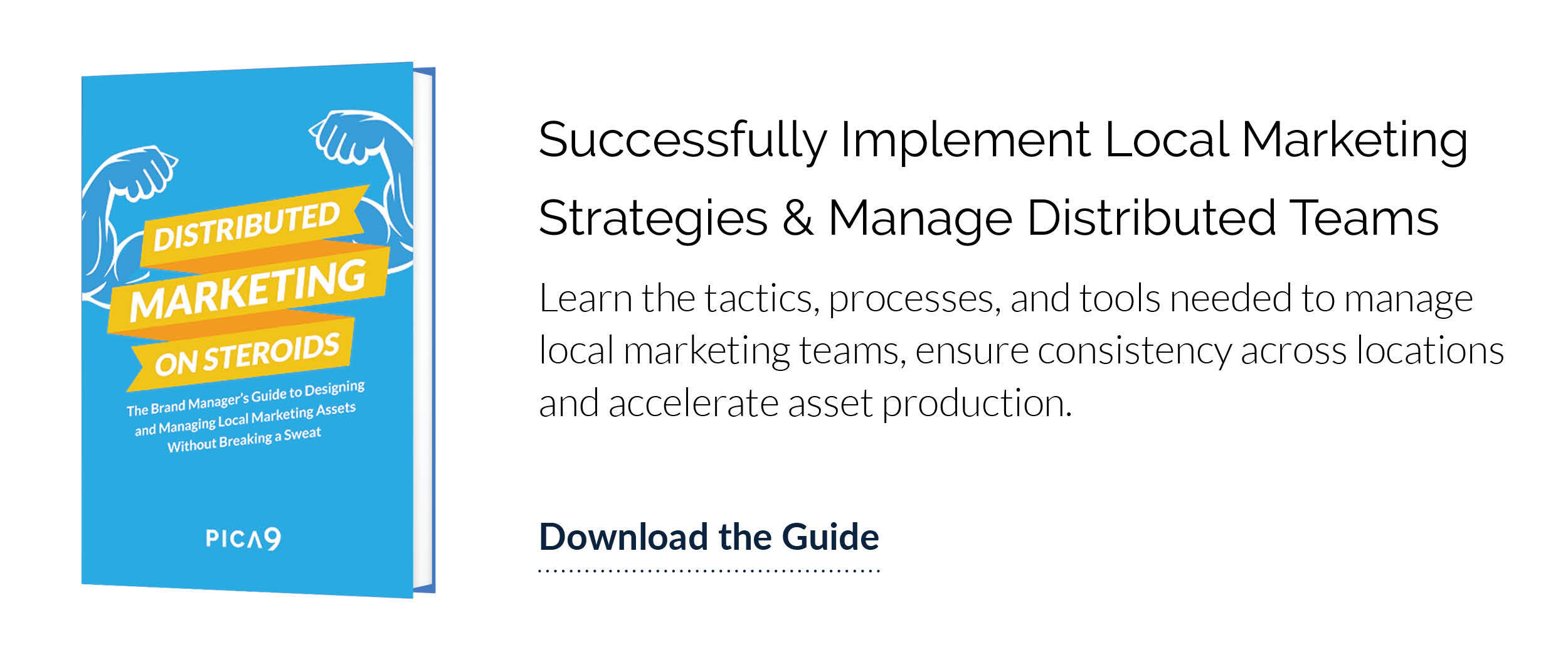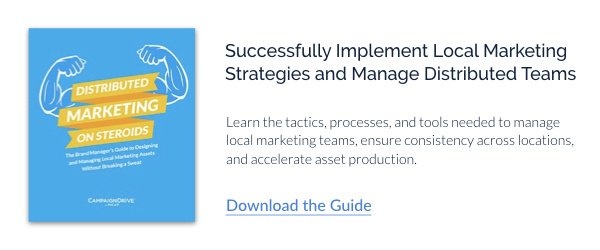Often, it's relatively easy to figure out which marketing resource management (MRM) tools are being used by top brands. Many marketing software vendors proudly display the logos of Fortune 500 clients on their websites. However, the exact tool being used isn't really the information brand managers seek. You want to know why these top brands are using the MRM tool they selected, and if it is (or isn't) working for them.
Marketing resource management technology is used to manage marketing resources and processes; typically budgets, people, time, and information. Firms can use MRM to plan and execute marketing campaigns end-to-end. In many organizations, MRM can be integrated with other, specialized marketing software, like customer relationship management (CRM), local marketing automation (LMA), or an email service provider (ESP).
But, First: MRM is Kind of Dead.
MRM as a single piece of software is in decline, along with many other forms of legacy enterprise software, like enterprise resources planning (ERP) tools. "The Enterprise Software market feels ripe for a massive shift," notes entrepreneur Mark Suster. No one wants clunky software when tech products designed for consumers have become so easy-to-use. Plus, the modern workplace is flexible, and companies need the scalability and mobility provided by cloud-based apps.
Today, MRM is rarely a single piece of enterprise software that lives on-premises in your server room. Instead, it's evolved to be cloud-based, and become a category of technologies. Usually, organizations are now using multiple cloud or software-as-a-service (SaaS) based applications to create a customized marketing technology ecosystem. While the core functions of an MRM tool haven't changed much in the last few years, the way companies are thinking about building out MRM definitely has.
What Does MRM Do?
MRM was one of the hottest new technologies back in 2001, when Gartner and The Financial Times hailed it as the next big thing in business technology. Early descriptions of MRM tools talk about relatively simple features, such as shared marketing databases. In 2001, MRM was a lot more primitive than today's sophisticated software, but back then it was a huge break-through.
In 2008, Gartner Research established a baseline for MRM by creating "The Five Competencies." While slight updates to the competencies were published in 2015, the general functions of this technology category remains virtually unchanged. The five "key capabilities," which are described below, are present in the feature-sets of almost all tools that fit standard definitions of MRM.
1. Strategic Planning and Financial Management
MRM offers technical tools to plan strategy and projects, assign budget for projects, and manage project resources from internal to external human resources. This often includes features like global calendaring, market research insights, vendor invoicing, and other similar functions.
2. Creative Production Management
Automation is used to create standard workflows for the creative production cycle. Production tracked within MRM workflows can include anything from a single email promotion to a series of high-profile television commercials. MRM enables users to manage all aspects of these projects with deadlines, task assignments, and approvals.
3. Knowledge Management
A single repository for all information and data associated with a single project, campaign, or asset. This often includes asset drafts, project guidance documents, brand guidelines, and the ability to categorize and search for documents. It may also include social media-inspired features for team members to communicate and collaborate.
4. Marketing Fulfillment
Real-time access to marketing assets and information for sales, distribution, vendors, and local partners. This often includes sensitive permissions that allow brand managers to provide the minimum necessary access based on an MRM user's job function. Marketing fulfillment requirements have changed for many major brands, especially distributed organizations. These organizations may choose to introduce an LMA tool for templating, and in order to control local customization of brand assets.
5. Marketing Performance Management
MRM should support the real-time collection and visual display of data related to marketing metrics and objectives, which may include budgets, project timelines, risks, or campaign performance. Specialized MRM systems or integrated LMA tools may also allow administrators to review performance on a regional or even single location basis to determine campaign deployment and performance.
Which MRM Tools are Top Brands Using?
Some top brands are probably still using massive MRM tools from "pure-play" vendors who only make one type of product. Others may be using MRM tools from big-name enterprise software vendors. However, using true MRM is probably becoming much less common, especially as specialized, SaaS apps become cheaper and more attractive to end users.
Instead of the "big names" in MRM, many brands are selecting a series of lighter, more flexible tools that fit their needs perfectly. SaaS applications can offer a flexible API, which makes the technical aspects of integrating your apps much easier and cheaper than it was in the past. Building a custom "marketing ecosystem" is no longer prohibitively expensive for everyone.
Many top brands are selecting an amalgamation of tools to handle different MRM components. In a tech environment where you have the flexibility to pick software apps that fit your needs, why wouldn't you pick the very best option and integrate it with your other apps?
Below, we've detailed three possible ways that very different types of organizations could customize an MRM experience to fit their specific needs:
1. Highly-Regulated Firms: Integrated Cloud
It's a safe bet that highly-regulated firms, such as large financial institutions, could find value in highly-customizable MRM tools that are part of a larger integrated technology cloud. Examples of this type of technology could include Microsoft SharePoint, or SAS' Marketing Operations Management. SharePoint is, in particular, highly-configurable. With custom development, regulated firms can design it to fit various MRM competencies, including metadata-tagged content storage, production, and user access.
Cloud-based tools, like SharePoint and Marketing Operations Management, reduce some of the risks a firm could experience using email or project management tools that aren't designed to meet regulatory requirements. By moving to cloud-based systems that are components of bigger enterprise technology ecosystems, highly-regulated firms can achieve better security and access.
2. High-Volume Manufacturing: Complex Knowledge Management
Fortune 500 manufacturing firms often have a massive product catalog. This creates a need for a single-point-of-truth for product data, especially if product distribution varies on a global scale. Use cases reveal that some organizations with complex products need MRM solutions to essentially act as a flexible database.
Ultimately, one way to resolve this use case is with cloud-based, MRM tools that have a strong feature set for knowledge management. With a nuanced back end product database, organizations can achieve a "smart content hub." These databases should display information in different languages, as well as contain up-to-date insights on product distribution by region or country.
3. Distributed Brands: MRM + Local Marketing Automation
Distributed brands with local representatives or franchisees have unique marketing challenges, particularly if they're juggling multiple brands or a culture that enables local co-branding. One such example, The Melting Pot, is using a wide variety of MRM tools to meet their unique needs. The fondue restaurant chose a tool specifically for creative production management. This project management software is designed for high-volume environments, and allows The Melting Pot's brand team to manage internal project requests and approvals.
With over 125 locations in six countries worldwide, The Melting Pot also needed a local marketing automation (LMA) tool for advanced design flexibility at the local level. As an organization known for the artistry and attention-to-detail of their collateral, their team wanted brand-defined templates that allowed locals to add wine partners, contact information, and other details quickly, without compromising the details of the original. With CampaignDrive by Pica9, Melting Pot quickly achieved over 98% adoption by local marketers.
How Many MRM Tools Do I Need?
Ultimately, the right number of MRM tools for your brand could range from one to a dozen, or significantly more. It depends on your needs and your business'. For distributed brands, selecting a tool with special local marketing competencies allows you to add significantly to your technology stack.
As a local marketing automation (LMA) tool, CampaignDrive offers features for creative production management, specifically the installation of templates. It also addresses knowledge management, enabling users to leave notes and comments during the approval process. Additionally, there are options for performance management, enabling brand managers to track local marketer performance.
CampaignDrive functionality is an important example of how MRM technologies can evolve, and be highly-effective for distributed organizations. Designed for even the toughest global marketing challenges, CampaignDrive enables local marketers to succeed while giving brand managers optimal control.
Interested in the MRM secrets of more brands? Check out what Marriott, The Melting Pot, and Polaris are using in our free eBook Distributed Marketing on Steroids: The Brand Manager’s Guide to Designing and Managing Local Marketing Assets Without Breaking a Sweat 

